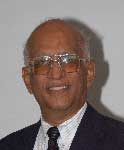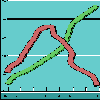 |
 |
Automation Creativity Sleeps
By : Jim Pinto, Major automation innovations date back to the 1970s, with nothing significant since then. Large, conservative, rule-bound companies dominate the automation business, where true creativity doesn't really seem to be possible. And smaller companies don't have the resources to create new, breakthrough categories. Today, industrial automation is a stagnant backwater where slow growth is simply a self-fulfilling prophecy.
October 2010
|
 Industrial automation suppliers regularly put out a stream of "new" product announcements - sensors, signal-conditioners, displays, recorders, controllers, valves, actuators and all the "stuff" in between.
Industrial automation suppliers regularly put out a stream of "new" product announcements - sensors, signal-conditioners, displays, recorders, controllers, valves, actuators and all the "stuff" in between.
But most are mere extensions and refinements of old products - no significant, new creations. Trace the roots of all significant automation business segments and you’ll find innovations dating back to the 1970s, mostly developed and introduced by small, start-up companies. Each represents an inflection point that generated new growth categories. The programmable logic controller (PLC) was the brainchild of prolific inventor Dick Morley, conceived at Bedford Associates, a small development company associated with Modicon (now part of Schneider). The first PLCs were developed for reprogrammable test installations in automobile manufacturing, replacing hard-wired relay logic, which was hard to modify. Productivity gains were overwhelming, resulting in rapid growth. This resulted in a market segment that has grown to several billions of dollars worldwide. Some 40 years later, the PLC has become a commodity market with minimal growth. Rosemount, a start-up involved with temperature measurement, developed innovative capacitive differential-pressure sensors for flow measurement, offering major advantages over conventional products offered by Honeywell and Foxboro, then industry leaders. After initial rapid growth, the company was acquired by Emerson, which consolidated through also acquiring other innovative sensor companies as well as flow-controllers (valves) to generate consolidated growth to billions of dollars worldwide. But, except for minor pockets of innovations, no new, significant sensors have been introduced for decades, and the market is relatively flat. The late '70s and early '80s marked the arrival of personal computers (PCs) in industrial automation. Several innovative start-ups grew fairly rapidly with automation-related human-machine interface (HMI) PC software. The two leaders, Wonderware and Intellution, were acquired, while others remained in relatively small niche markets. But further growth in the industrial software arena has remained elusive. An exception to the start-up-innovation rule was distributed control systems (DCS), developed in the early 1970s by a team of engineers at Honeywell. This rode the coattails of mainframes and mini-computers, which were already being used in large, central control-rooms at process plants. The DCS category achieved $100 million annual revenues within just a couple of years, and the segment has since expanded to several billions of dollars worldwide. Honeywell still remains a major player. But the category stagnates, with growth only in India, China and developing areas. Wireless growth bust?Many (including me) thought that recent developments in industrial wireless would catch on to become a burgeoning new category. But industrial wireless products are still bulky and expensive, and none of the leaders has been bold enough to offer breakthrough pricing, which inhibits implementation in large quantities. And so the market languishes, with too much discussion of standards and not much new business on the horizon.Creativity is the ability to introduce something new, with value that is significantly greater than anything that already exists. Conservative, rule-bound companies dominate the automation business, where true creativity doesn't really seem to be possible. And smaller companies don't have the resources to create new, breakthrough categories. In contrast with today's tech world, which seems bubbling incessantly with ideas and creativity, industrial automation is a stagnant backwater where slow growth is simply a self-fulfilling prophecy. The insatiable worldwide demand for continuous productivity improvements must inevitably be satisfied with creative methods, products and systems. When industrial automation growth finally emerges after decades of relative sluggishness, the markets will not need to be pushed - they will pull with unquenchable thirst for productivity gains. Creative new products won't just find acceptance - production demand will drive expansion. A new surge of industry growth will result, once again making automation the pulsing heart of productivity. 
|
 Pinto's Points How to win in the Automation Business Go shopping - books, electronics, CD/DVD Selected advertising coming here. Contact Jim Pinto for rates. |
Return to Index of all JimPinto Writings

 Return to JimPinto.com HomePage
Return to JimPinto.com HomePage
If you have ideas or suggestions to improve this site, contact: webmaster@jimpinto.com
Copyright 2006 : Jim Pinto, San Diego, CA, USA
